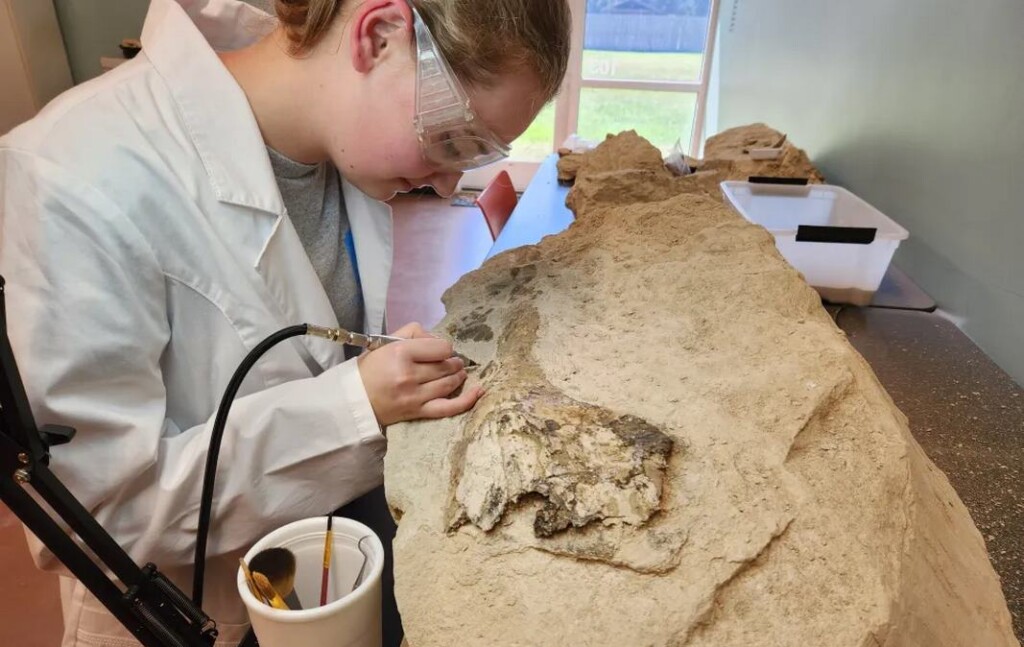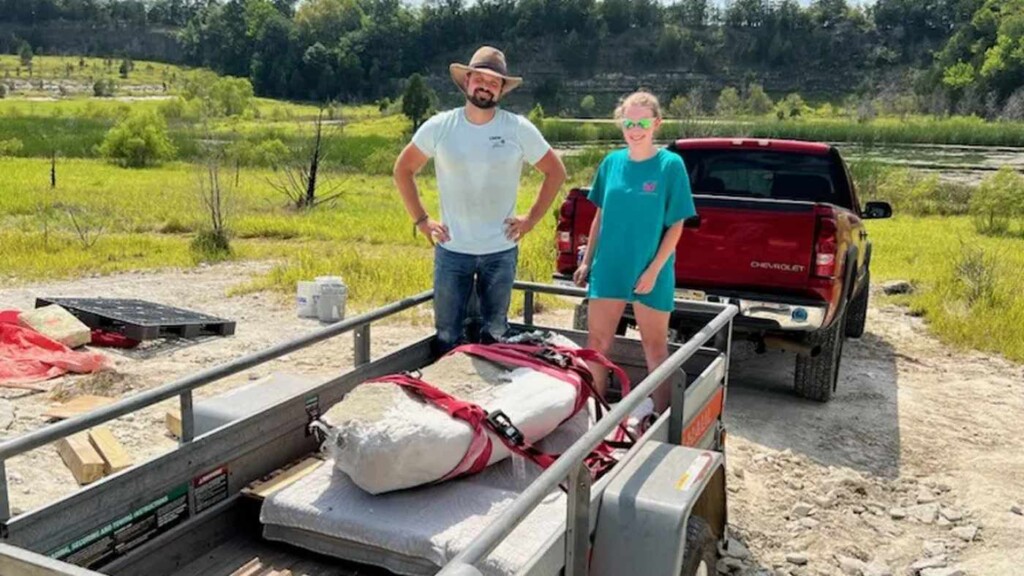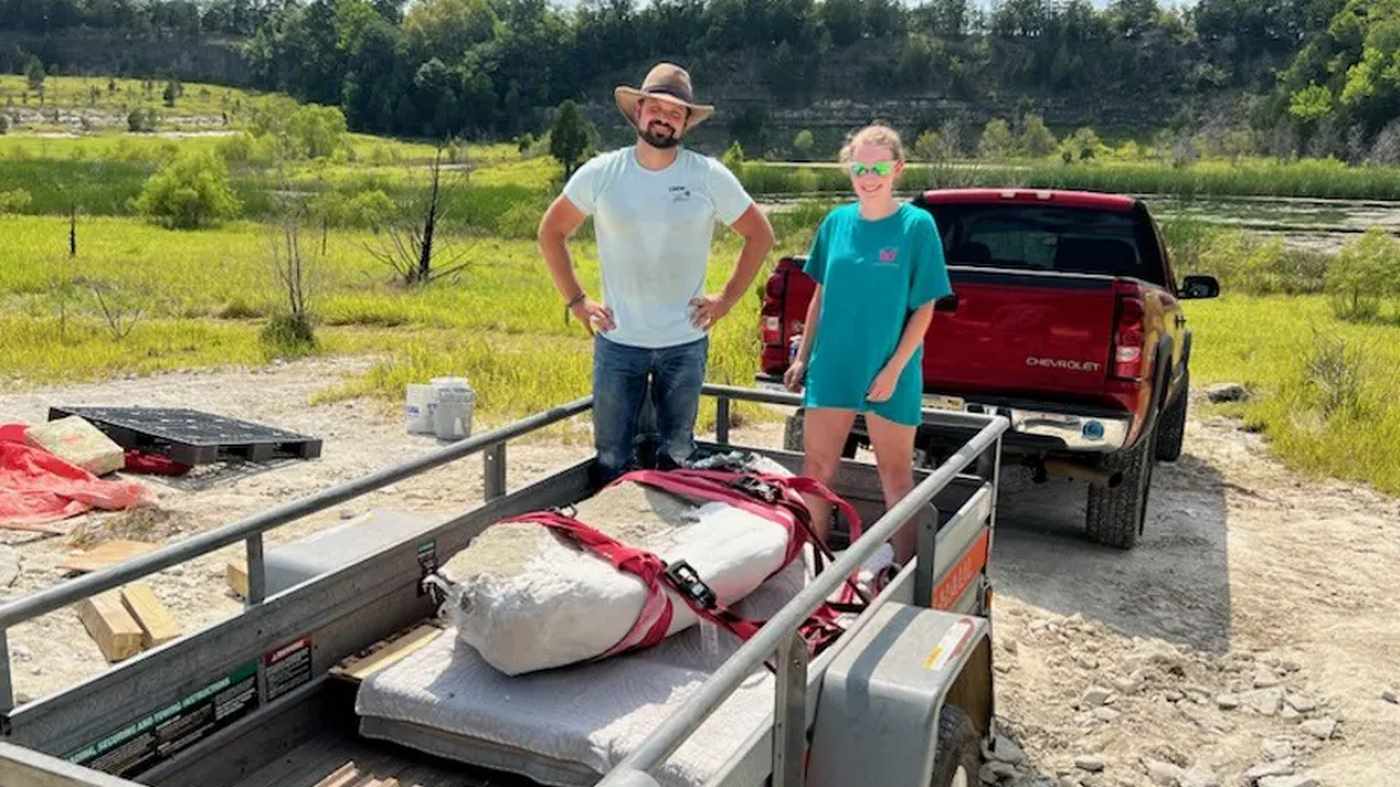
Like many kids, Lindsey Stallworth from Alabama loves a day out to look for sharks’ teeth. But on one such trip, it was a far bigger, far older discovery that awaited her.
Stallworth was with her high school biology teacher, but it was the young student who noticed some small bone fragments embedded in soft rock. Following them up a hill, they turned up the nearly complete skull of a 34-million-year-old whale.
Stallworth has been looking for sharks’ teeth on her family farm since she was little, and after her first biology class at the Alabama School of Math and Science in Mobile, she learned her new teacher, Andrew Gentry, was a paleontologist.
Showing him a plastic bag of some of the teeth she had found over the years, one in particular caught Gentry’s eye, and he was curious to look in the area where she’d found it.
Not long ago geologically speaking, Alabama was covered in shallow seas, and it’s why Stallworth finds shells and sharks’ teeth nowhere near the beach. She invited Gentry to come along on a fossil hunt on the farm, and it’s where they found the staggering discovery.
“To find one that’s this complete is actually very rare,” Gentry told NBC 15’s Andrea Ramey. “We’re very excited by the fact that we got the majority of the skull out and that there is more of the skeleton left to uncover, which could give us the complete animal.”
MORE PRIVATE LAND DISCOVERIES: Portuguese Man Accidentally Finds 82-Foot-Long Dinosaur in His Backyard
The animal is from the family Basliosauridae, a group of extinct, primitive, toothed whales that may have included the heaviest and largest animal ever to live.

“We didn’t actually know what we’d found at first,” Gentry explained to FOX News. “There was only a small portion of the skull actually exposed on the surface, and we spent about three or four days digging away with very small dental picks and tiny hand chisels until we uncovered more of the lower jaw of the animal.”
It took months to extract the skull from the rock and bring it to the ASMS in Mobile for further examination. The date—34 million years ago—indicates that it’s likely to be a new species of Basilosaurid.
MORE FOSSIL HUNTERS: Canada Schoolteacher Finds Fossil that May Be 300 Million Years Old and Could Re-Write Fossil Record
“I was really overwhelmed, but at the same time I was just full of excitement that I actually get to be here for this project, I get to see it happening in front of my eyes and be a part of it because as a high schooler I didn’t think I’d get to do any of this stuff,” Stallworth told NBC 15.
Next summer, the pair will return to the hill in which they found the intact skull to see if the rest of the skeleton is still entombed.
SHARE This Teen’s Wild Leap Into Paleontology With Your Friends…




















